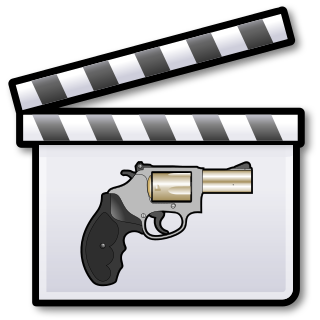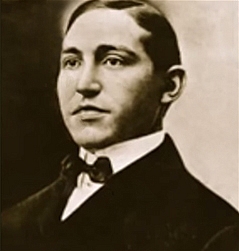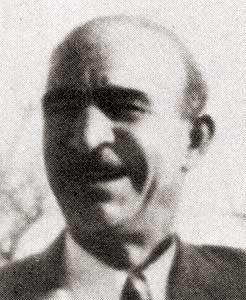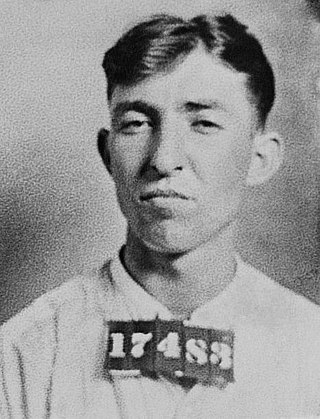Related Research Articles

Crime fiction, detective story, murder mystery, mystery novel, and police novel are terms used to describe narratives that centre on criminal acts and especially on the investigation, either by an amateur or a professional detective, of a crime, often a murder. It is usually distinguished from mainstream fiction and other genres such as historical fiction or science fiction, but the boundaries are indistinct. Crime fiction has several subgenres, including detective fiction, courtroom drama, hard-boiled fiction, and legal thrillers. Most crime drama focuses on crime investigation and does not feature the courtroom. Suspense and mystery are key elements that are nearly ubiquitous to the genre.

Cesare Lombroso was an Italian eugenicist, criminologist, phrenologist, physician, and founder of the Italian school of criminology. He is considered the founder of modern criminal anthropology by changing the Western notions of individual responsibility.

Bank robbery is the criminal act of stealing from a bank, specifically while bank employees and customers are subjected to force, violence, or a threat of violence. This refers to robbery of a bank branch or teller, as opposed to other bank-owned property, such as a train, armored car, or (historically) stagecoach. It is a federal crime in the United States.

Crime films, in the broadest sense, is a film genre inspired by and analogous to the crime fiction literary genre. Films of this genre generally involve various aspects of crime and its detection. Stylistically, the genre may overlap and combine with many other genres, such as drama or gangster film, but also include comedy, and, in turn, is divided into many sub-genres, such as mystery, suspense or noir.
The National Crime Syndicate was a multi-ethnic, closely connected, American confederation of several criminal organizations. It mostly consisted of and was led by the closely interconnected Italian American Mafia and Jewish Mob. It also involved other criminal organizations such as the Irish Mob and to a lesser extent African American groups. Hundreds of murders were committed by Murder, Inc. on behalf of the National Crime Syndicate during the 1930s and 1940s.

Charles Arthur Floyd, nicknamed Pretty Boy Floyd, was an American bank robber. He operated in the West and Central states, and his criminal exploits gained widespread press coverage in the 1930s. He was seen positively by the public because it was believed that during robberies he burned mortgage documents, freeing many people from their debts. He was pursued and killed by a group of Bureau of Investigation agents led by Melvin Purvis. Historians have speculated as to which officers were at the event, but accounts document that local officers Robert "Pete" Pyle and George Curran were present at his fatal shooting and also at his embalming. Floyd has continued to be a familiar figure in American popular culture, sometimes seen as notorious, other times portrayed as a tragic figure, even a victim of the hard times of the Great Depression in the United States.

Paul Kelly was an Italian American mobster and former boxer, who founded the Five Points Gang in New York City. He had started some brothels with prize money earned in boxing. Five Points Gang was one of the first dominant street gangs in New York history. Kelly recruited young, poor men from the ethnically diverse immigrant neighborhoods of Lower Manhattan. The Five Points Gang included some who later became prominent criminals in their own right, including Johnny Torrio, Al Capone, Lucky Luciano, Meyer Lansky and Frankie Yale.

Offender profiling, also known as criminal profiling, is an investigative strategy used by law enforcement agencies to identify likely suspects and has been used by investigators to link cases that may have been committed by the same perpetrator. The ancestor of modern profiling, R. Ressler of the FBI, considered profiling as a process of identifying all the psychological characteristics of an individual, forming a general description of the personality, based on the analysis of the crimes committed by him or her.

Frank Scalice, also known as "Don Ciccio" and "Wacky", was an Italian-American mobster active in New York City, who led the future Gambino crime family from 1930 to 1931. He was consigliere from 1931 until his murder on June 17, 1957.

Gustav Aschaffenburg was a German psychiatrist born in Zweibrücken.
George "Snatchem" Leese was an American criminal, pirate, and a leader of the Slaughter House Gang, known for pickpocketing and river pirating and also for being a prominent personality at illegal bare-knuckle prize fighting held in New York City's infamous Forth Ward and Five Points dive bars during the 1840s and 50s, most notably at Kit Burns' Sportsman's Hall. He was the bouncer and often appointed the official "bloodsucker" in prize fights which called for him to suck the blood from wounds suffered by competitors so the bout could continue for as long as possible. This office made Leese an important figure at these fights.

Volney Everett "Curley" Davis was an American bank robber and Great Depression-era outlaw. A longtime Oklahoma bandit, he was the boyfriend of Edna Murray and an associate of both the John Dillinger and Alvin Karpis-Barker gangs during the 1930s.

Harold Eugene "Eddie" Green was an American bank robber and Depression-era outlaw during the 1930s, best known as a member of the John Dillinger gang. He was also associated with Frank "Jelly" Nash, Volney Davis and the Barker-Karpis Gang in his early career.
Nicole Hahn Rafter was a feminist criminology professor at Northeastern University. She received her Bachelor of Arts degree from Swarthmore College in Pennsylvania, achieved her Master of Arts in Teaching from Harvard University, and obtained a Ph.D. in Criminal Justice from State University of New York in Albany. She began her career as a high school and college English professor and switched to criminal justice in her mid-thirties.
Zvonimir Roso was a Croatian criminologist and psychologist, one of South-eastern Europe's foremost authorities in the science of polygraph and the founder of what is now known as "Zagreb School of Polygraph".
Andrew of Carniola was a Roman Catholic archbishop from Carniola, in present-day Slovenia.

Jeffrey Ian Ross is a scholar, professor, and criminologist specializing in the fields of policing, corrections, political crime, violence, street culture, graffiti and street art, and crime and justice in American Indian communities. Since 1998 Ross has been a professor at the University of Baltimore. He is a former co-chair and chair of the Division of Critical Criminology and Social Justice of the American Society of Criminology. Ross is an author, co-author, editor, and co-editor of numerous books.
Michael Andrew Arntfield is a Canadian academic, author, criminologist, true crime broadcaster and podcaster, a professor at the University of Western Ontario, and a Fulbright scholar. He is also a workplace violence harassment consultant, threat assessor, and former police officer. From 1999 to 2014, Arntfield was employed with the London, Ontario, Police Service as a police officer and detective. In 2014, Arntfield left policing to accept a customized academic appointment at the University of Western Ontario. Today, Arntfield teaches "literary criminology," a term he adopted combined English literature and crime studies program.
The Dillinger Dossier ISBN 978-0913204160 is a book written by Jay Robert Nash. The book is based on police records and observes the events of July 22, 1934 as being a shooting that resulted in the fatal wounding of a double of John Dillinger. The book was published in 1983 by December Press, and involved an expansion and update of Nash's earlier book Dillinger: Dead or Alive.
References
- ↑ Library Journal review by Sally G. Waters of Encyclopedia of World Crime: Criminal Justice, Criminology, & Law Enforcement. Review reprinted at Amazon.com. Accessed May 5, 2006.
- ↑ "Encyclopedia of Western Lawmen & Outlaws by Jay Robert Nash reviewed by Richard Maxwell Brown, Journal of American History, Vol. 81, No. 4 (Mar., 1995), pp. 1885-1887.
- ↑ "NASH v. CBS, INC". www.law.cornell.edu. Retrieved 2017-03-15.